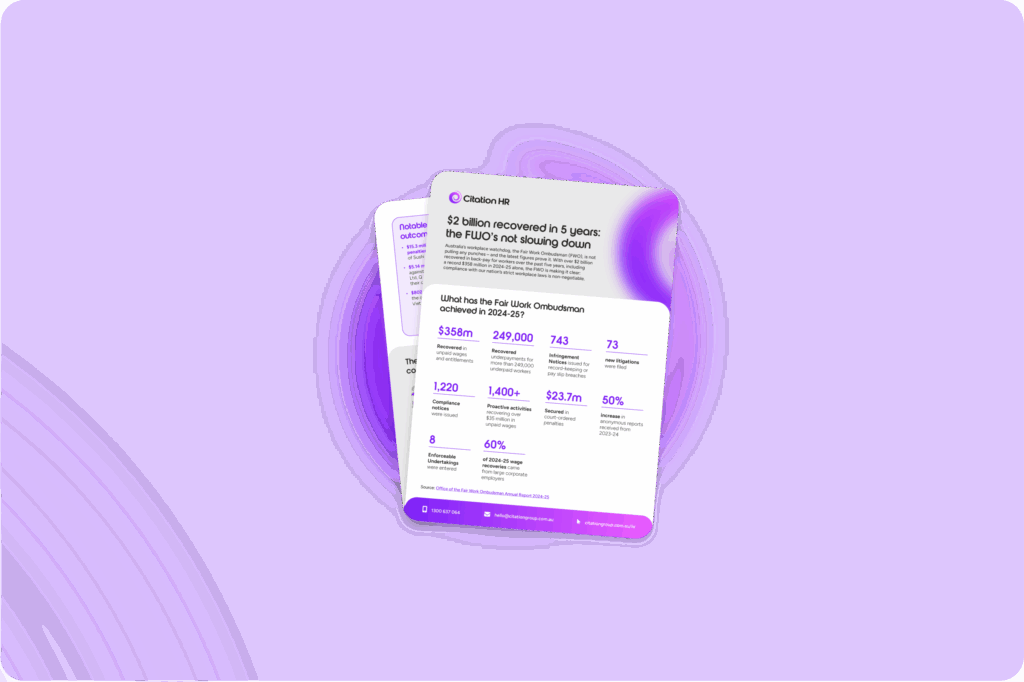
The concept of psychosocial health isn’t new, but its recognition within workplace injury legislation has only recently gained substantial momentum. With a significant increase in the volume of claims related to psychosocial health issues, increased awareness of workplace mental health risks, and a corresponding decline in claims for physical injuries in recent years, business owners must understand their Workplace Health & Safety (WHS) obligations inside out.
Data from research conducted by Safe Work Australia has highlighted just how psychosocial and mental health are impacting businesses:
- In 2021-22, mental health conditions accounted for 11,700 of all workers compensation claims.
- 2 per cent of serious mental stress claims were due to workplace harassment, bullying, or work pressure.
- Extended absences for mental health conditions result in over four times more lost time than that for physical injuries and illnesses.
- 1 per cent of individuals with mental health claims returned to work compared to 91.6 per cent for all injuries.
In this article, we’ll explore what psychosocial hazards are, share best-practice strategies business owners can implement to help support their teams, and how to ensure you’re meeting your employer obligations. Let’s get into it…
What is psychosocial safety?
Psychosocial safety is an overarching term that refers to the practices, policies, and conditions within a workplace that protect employees’ mental health and well-being.
- Psychosocial hazards are the elements within a workplace that relate to how work is designed, organised, and managed and the social and environmental context in which the work occurs.
- Psychosocial risks are the elements of work that have the potential to cause harm.
Common psychosocial hazards include issues like workplace bullying and sexual harassment, violence, and conflicts or poor relationships among colleagues. Other risks arise from remote or isolated work, inappropriate role placements, excessive workloads, long working hours, or low job control. Even flexible working arrangements, when poorly managed, can contribute to stress. Identifying these hazards is crucial for fostering a safe, supportive, and productive work environment.
How to reduce psychosocial risks at work starts with recognising and identifying the risks
Identifying psychosocial risks involves proactively recognising potential issues before they escalate into serious problems. This requires engaging with workers to ensure that any measures taken are both practical and effective, preventing harm rather than responding to it after the fact. By addressing these risks early, businesses can save money, improve employee well-being, and enhance overall performance and productivity, fostering a healthier and more resilient workplace.
Employers have a legal obligation to:
- Eliminate psychosocial risk so far as reasonably practicable.
- Minimise the psychosocial risk so far as reasonably practicable, if the particular risk can’t be eliminated.
- Must be able to show evidence that it has eliminated or minimised these psychosocial hazards in the workplace.
Workplace well-being strategies: support can be delivered in various forms
There’s no one-size-fits-all approach to supporting your people with their workplace safety and mental health. This means support can delivered in various forms of workplace mental health programs, including in-person, well-stocked libraries, digital platforms, and Employee Assistance Services.
When should you ask for expert help?
Asking for help isn’t a sign of weakness; it’s a sign of strength, and when it comes to navigating psychosocial risk factors and employee mental health hazards, having experts on your side can make all the difference. At Citation Safety, our industry-leading safety specialists have a wealth of experience understanding the complexities of Australia’s WHS framework and psychosocial risk assessment.
Managing psychosocial hazards and risks is essential. Talk to us
Citation Safety has created a unique suite of psychosocial risk management services, Psychosocial Hazard Management, specifically designed to assist businesses that lack the in-house expertise or resources to meet Australia’s stringent WHS laws and employer obligations. With our support, you can have peace of mind knowing your business is compliant and not at risk.
Backed by industry-leading safety experts, these services can aid organisations in meeting WHS obligations and implementing best-practice processes to avoid work-related injuries and illnesses. The team at Citation Safety is ready and waiting to support your business. Contact our friendly team to schedule a confidential, no-obligation chat.
About our author
Simone Atherton is a Workplace Relations Consultant at Citation Group. She has an interest in all things legislation and ER/IR related and regularly provides advice on workplace matters to find solutions for clients. She is currently completing a postgraduate Juris Doctor degree and is passionate about industrial relations, providing effective and tailored solutions to workplace challenges, and ensuring fair and compliant practices for both employers and employees.









